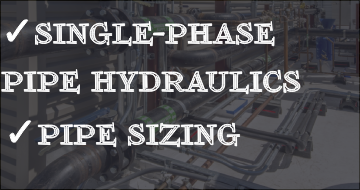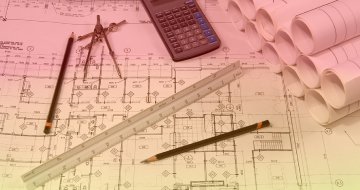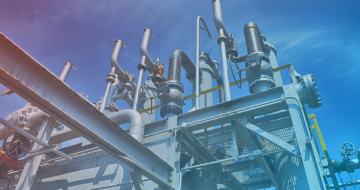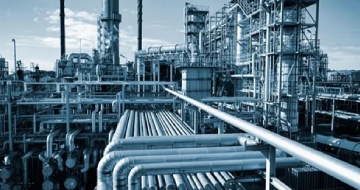IIRF Online > Business > Industry > Piping > Know Read Understand Piping & Instrumentation Diagrams P&IDs
Know Read Understand Piping & Instrumentation Diagrams P&IDs by Udemy
Learn how Process Control, Safety Instrumented Systems, Interlock & Alarms are represented in engineering P&ID drawings
Course Highlights
- Understand and evaluate the purpose, content, and importance of P&IDs to the construction, commissionning, safe operation and maintenance of a process plant
- Learn how to read, interpret and successfully understand ALL P&IDs through numerous real industrial examples
- Identify the 5 key sections of your P&ID (title block, grid system, revision block, notes and legend, engineering drawing block)
- Know and identify valve symbols on your P&IDs (gate, globe, ball, butterfly, needle…)
- Know and identify valve actuator symbols on your P&IDs (pneumatic, hydraulic, electric, single acting spring return, double acting…)
- Know the standards and conventions for valve status (open, closed, throttled)
- Identify valve position and failure mode on your P&IDs (LO, LC, FO, FC, FAI…)
- Know and identify process equipment symbols on your P&IDs (pumps, compressors, heat exchangers, columns, furnaces, reactors, vessels, containers, mixers…)
- Know and identify piping symbols on your P&IDs (process, pneumatic, electric, hydraulic…)
- Determine specific information about a process piping including type of material in the line, line size, line number and type of insulation when applicable
- Know and identify pipe fitting symbols on your P&IDs (flanges, reductions, caps, spool pieces, unions…)
- Know and identify the P&ID symbols of safety devices that are used to safely isolate, vent & drain process equipment for ease of maintenance (spectacle and spade blinds, double block and bleed valves…)
- Know and identify pneumatic, electric, hydraulic and instrument signal lines on your P&IDs
- Know and identify instrumentation symbols on your P&IDs (flow meters, temperature transmitters, pressure gauges…)
- Know and identify the location of instruments, recorders, modifiers and controllers on your P&IDs (field mounted, board mounted, inaccessible…)
- Know the lettering and numbering standards based on ISA symbolgy for piping, instruments and equipment designation on your P&IDs
- Trace the flow of a process stream into your P&ID, through the pipes and equipment, and out of the P&ID
- Understand the importance of process control and how it is displayed on your P&IDs
- Successfully interpret basic process control schemes on your P&IDs
- Understand the different process control options and how they are displayed on your P&IDs (cascade control, split range control, ratio control, batch control, selective control…)
- Define the term Flow Control and explain how it is displayed on your P&IDs
- Define the term Temperature Control and explain how it is displayed on your P&IDs
- Define the term Pressure Control and explain how it is displayed on your P&IDs
- Define the term Level Control and explain how it is displayed on your P&IDs
- Understand the control of pressure in a pipe and explain how it is displayed on your P&IDs
- Understand the control of flow in a pipe and explain how it is displayed on your P&IDs
- Understand flow merging control and explain how it is displayed on your P&IDs
- Understand flow splitting control and explain how it is displayed on your P&IDs
- Understand centrifugal pump control systems (discharge throttling, variable speed drive, minimum flow…) and explain how they are displayed on your P&IDs
- Understand positive displacement pump control systems (recirculation pipe, variable speed drive, stroke adjustment…) and explain how they are displayed on your P&IDs
- Understand compressor control systems (capacity control, variable speed drive, anti-surge…) and explain how they are displayed on your P&IDs
- Understand heat exchanger control systems (direct control, bypass control, back pressure control…) and explain how they are displayed on your P&IDs
- Understand reactor temperature control systems and explain how they are displayed on your P&IDs
- Understand fired heater control systems and explain how they are displayed on your P&IDs
- Understand container and vessel control systems and explain how they are displayed on your P&IDs
- Understand electric motor control systems (ON / OFF actions) and explain how they are displayed on your P&IDs
- Know and understand the concept of Safety Instrumented Systems (SIS) and explain how safety instrumented functions are displayed on your P&IDs
- Know and understand the concept of Alarm Systems and explain how alarms are displayed on your P&IDs
- Identify safe operating limits based on system designs as displayed on your P&IDs
- Know and understand how Fire and Gas Detection Systems (FGS) are displayed on P&IDs
- Assess emergency situations and regulatory compliance issues using your P&IDs
Curriculum
1 Topic
Introduction
1 Topic
Before you start this course
4 Topics
What's a P&ID ?
Why is a P&ID so important ?
Who uses P&ID's ?
How do P&ID's look like ?
9 Topics
Learning objectives
Introduction
Anatomy of a P&ID
The title block
The drawing scale
The grid system
The revision block
Changes
Notes and legends
15 Topics
Learning objectives
Valve symbols
Valve actuator symbols
Control valve designations
Standards and conventions for valve status
Process equipment symbols
Piping symbols
Pipe fitting symbols
Isolating venting & draining symbols for ease of maintenance
Instrumentation
Sensing devices and detectors
Location symbols
Modifiers and transmitters
Indicators and recorders
Controllers
3 Topics
Example #1 : Identifying process equipment and flow paths on a P&ID
Example #2 : Identifying valve position and failure mode on a P&ID
Example #3 : Identifying the symbols on a P&ID
5 Topics
Learning objectives
Piping designation code
Equipment designation code
Instrument designation code
Miscellaneous designation codes
1 Topic
Important notes
3 Topics
Learning objectives
The process
Process control
3 Topics
Learning objectives
The control loop
Process control terms
15 Topics
Learning objectives
Single control loops : Feedback control
Pressure control loops
Flow control loops
Level control loops
Temperature control loops
Multi-variable loops
Multi-variable loops : Feedforward control
Feedforward + Feedback
Cascade control
Split range control
Operations on control signals
Ratio control
Batch control
Selective control
30 Topics
Learning objectives
Why do we need to control ?
How to control ?
Pipe control 1/4
Pipe control 2/4
Pipe control 3/4
Pipe control 4/4
Flow control 1/2
Flow control 2/2
Pump control 1/7
Pump control 2/7
Pump control 3/7
Pump control 4/7
Pump control 5/7
Pump control 6/7
Pump control 7/7
Compressor control 1/3
Compressor control 2/3
Compressor control 3/3
Heat transfer equipment control 1/6
Heat transfer equipment control 2/6
Heat transfer equipment control 3/6
Heat transfer equipment control 4/6
Heat transfer equipment control 5/6
Heat transfer equipment control 6/6
Reactor temperature control
Fired heater control 1/2
Fired heater control 2/2
Container and vessel control 1/2
Container and vessel control 2/2
25 Topics
Learning objectives
Safety strategies
Concept of Safety Instrumented Systems (SIS) 1/4
Concept of Safety Instrumented Systems (SIS) 2/4
Concept of Safety Instrumented Systems (SIS) 3/4
Concept of Safety Instrumented Systems (SIS) 4/4
Anatomy of a SIS 1/8
Anatomy of a SIS 2/8
Anatomy of a SIS 3/8
Anatomy of a SIS 4/8
Anatomy of a SIS 5/8
Anatomy of a SIS 6/8
Anatomy of a SIS 7/8
Anatomy of a SIS 8/8
Showing safety instrumented functions on P&IDs
Discrete control
Concept of Alarm systems 1/5
Concept of Alarm systems 2/5
Concept of Alarm systems 3/5
Concept of Alarm systems 4/5
Concept of Alarm systems 5/5
Fire and Gas Detection Systems (FGS)
Electric motor 1/3
Electric motor 2/3
Electric motor 3/3
6 Topics
About this practice session
P&ID example #1 : Legend and specifications
P&ID example #2 : Hydrogen delivery station
P&ID example #3 : Centrifugal compressor
P&ID example #4 : Hydrogen from shale gas
P&ID example #5 : Fired heater
2 Topics
Downloadable resources
Bonus

Know Read Understand Piping & Instrumentation Diagrams P&IDs






